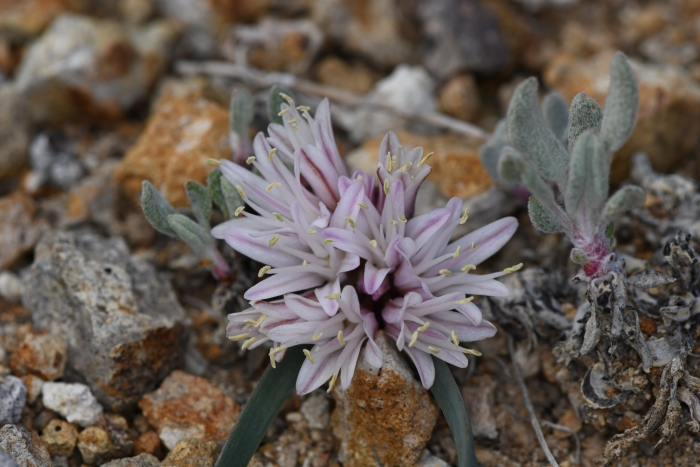Small Onion
(Allium parvum)
Small Onion (Allium parvum)
/
/

Chloe and Trevor Van Loon
CC BY 4.0
Image By:
Chloe and Trevor Van Loon
Recorded By:
Copyright:
CC BY 4.0
Copyright Notice:
Photo by: Chloe and Trevor Van Loon | License Type: CC BY 4.0 | License URL: http://creativecommons.org/licenses/by/4.0/ | Rights Holder: Chloe and Trevor Van Loon | Publisher: iNaturalist | Date Created: 2022-05-06T11:12:52-07:00 |
























Estimated Native Range
Summary
Allium parvum, commonly known as Small Onion, is a perennial herb native to the high elevation sagebrush steppe and montane regions of the western United States. It is specifically adapted to rocky, well-drained soils in areas such as California, Nevada, Oregon, Idaho, western Utah, and southwestern Montana, at elevations between 3937-9186 feet. The plant typically has a bulb 0-1 inch wide and a flowering scape that rarely exceeds 5 inches in height. Its pale pink flowers, which bloom in late spring to early summer, are characterized by prominent dark midveins and are complemented by purple or yellow anthers, making them quite showy despite their small size.
The Small Onion is valued for its ornamental qualities, especially in rock gardens and xeriscapes, due to its drought tolerance and attractive blooms. It is also historically significant, as the Paiute people traditionally used it for food and flavoring. In cultivation, Allium parvum requires minimal maintenance, thriving in full sun and well-drained soils with low to moderate water needs. While it is not commonly affected by diseases, onion thrips and bulb rot can occasionally be problematic. This species is not known for being invasive and does not have aggressive roots, making it a safe choice for most garden settings.CC BY-SA 4.0
The Small Onion is valued for its ornamental qualities, especially in rock gardens and xeriscapes, due to its drought tolerance and attractive blooms. It is also historically significant, as the Paiute people traditionally used it for food and flavoring. In cultivation, Allium parvum requires minimal maintenance, thriving in full sun and well-drained soils with low to moderate water needs. While it is not commonly affected by diseases, onion thrips and bulb rot can occasionally be problematic. This species is not known for being invasive and does not have aggressive roots, making it a safe choice for most garden settings.CC BY-SA 4.0
Plant Description
- Plant Type: Herb, Bulb
- Height: 0.5-1.5 feet
- Width: 0.5-1 feet
- Growth Rate: Moderate
- Flower Color: Pink, Purple, White
- Flowering Season: Spring, Summer
- Leaf Retention: Deciduous
Growth Requirements
- Sun: Full Sun, Part Shade
- Water: Medium
- Drainage: Medium, Fast
Common Uses
Bee Garden, Border Plant, Low Maintenance, Rock Garden
Natural Habitat
High elevation sagebrush steppe and montane regions
Other Names
Common Names: Little Onion
Scientific Names: , Allium parvum, Allium modocense, Allium pleianthum var. particolor, Allium tribracteatum var. andersonii, Allium tribracteatum var. parvum,
GBIF Accepted Name: